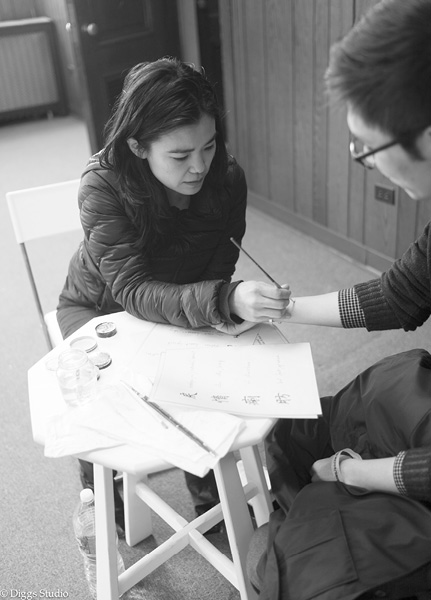
BAD KANJI
first performed on March 3, 2015
Skylight at Moynihan Station, New York, NY
performed seven times in 2015
AKIKO ICHIKAWA
Brooklyn, NY
302183485a302183485k302183485i302183485k302183485o302183485.302183485i302183485c302183485h302183485i302183485k302183485a302183485w302183485a302183485@302183485g302183485m302183485a302183485i302183485l302183485.302183485c302183485o302183485m
vimeo.com/user1364480/videos
BAD KANJI
AKIKO ICHIKAWA
Japanese writing, katakana or kanji (Chinese-derived characters) combined with the phonetically-based hiragana, has featured widely in American street culture for nearly two decades. In clothing and body art, adults of all income levels sport these Asian texts on their arms, necks, and torsos, looking cutting-edge to many, and silly to others. Under the influence of hip-hop and the global reach of brands like Superdry, this writing has become a fashion statement, “merely” visual as translations are ignored or forgotten. Even in the case of tattoos, characters are oftentimes written horrendously. This of course works the other way with the young and old in every major Asian metropolis going about with nonsensical English on shirts, jackets, and accessories.
For the Spring Break Art Show in March 2015, I staged a six-day participatory public performance as part of the group show Free Market Economy (curated by Chris Bors) in Room 4100 on the upper floors of the James A. Farley Post Office, painting temporary Japanese character tattoos on fairgoers. I charged $5 if they picked from my list of eighteen “good” ones, and nothing if they chose from my list of fourteen “bad” ones. Examples of the former included good fortune, deep, and breathe, and the latter, ugly, controversy, and diarrhea. Participants could have them painted in gold, silver, or red on any part of their bodies. While painting, we engaged in conversations about the Japanese language, cultural differences, and the meaning of worth. Another theme that emerged was what gets judged as “bad” and why.
Over the week, I sat for about five hours daily on four of the days, giving out a total of 66 tattoos. In the end, 46-to-20 participants favored the opportunity for a free tattoo. Quite a few thought they could go through with a bad kanji but ended up changing their minds out of superstition. Of those who chose bad kanji, many appreciated sporting the unexpected. In many instances, I explained the pictographic meanings of a character: the kanji for urine, for example is a representation of a person over the character for water, and the character for loyalty depicts the character for middle atop the one for heart, in effect, spelling out “what is within the heart.” Some wanted a negative character to reflect their states of mind: one young man felt and chose the tattoo “weak” appropriately capturing his state of being unemployed.